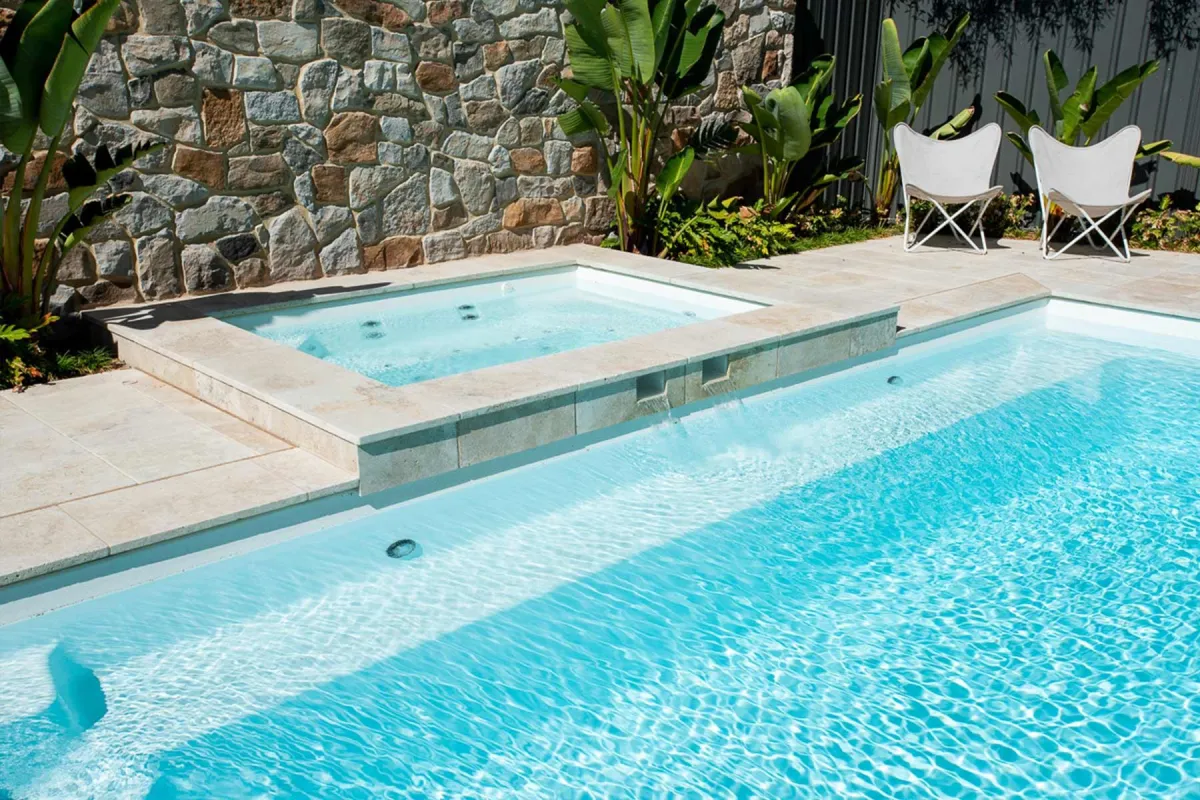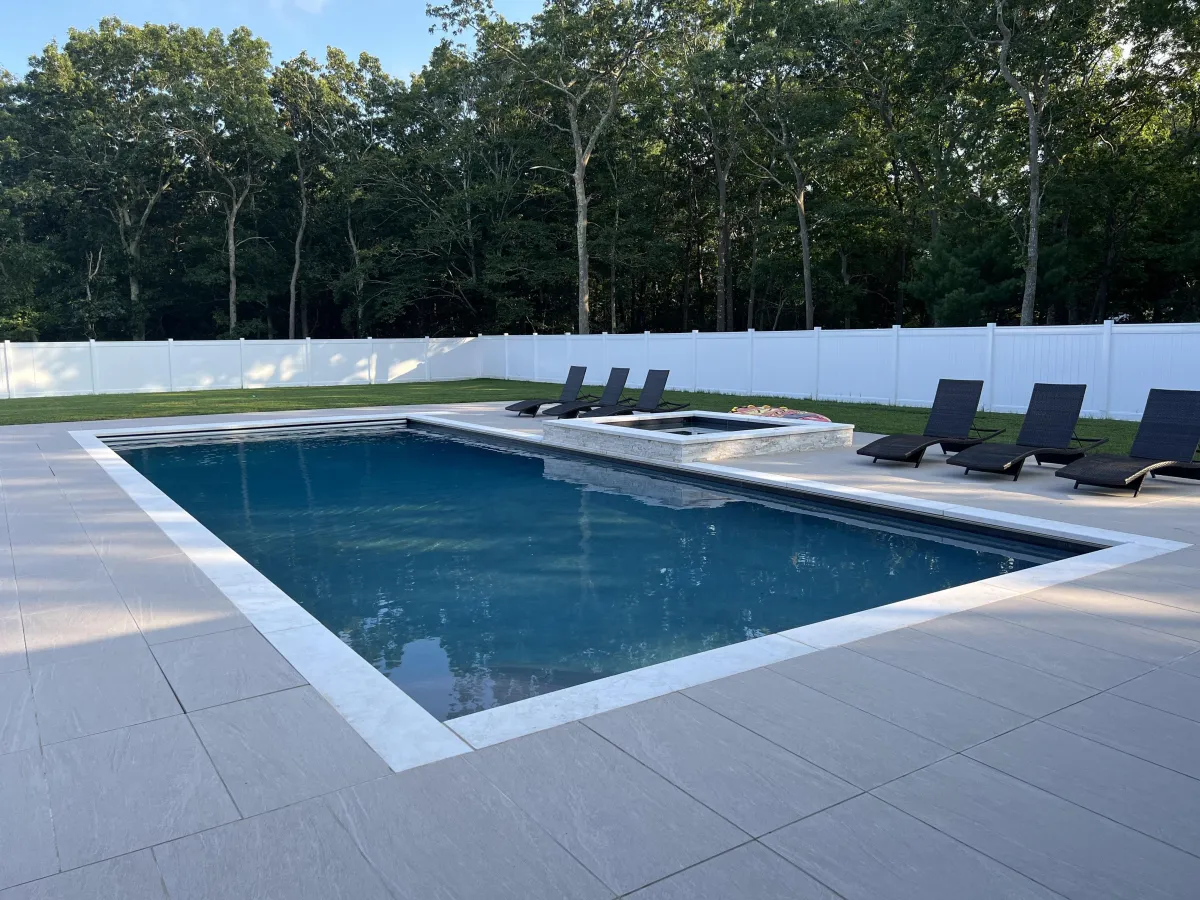
Master Pool Water Balance in Sag Harbor, NY & Surrounding Areas
Maintaining proper pool water balance is essential for safe, clear, and long-lasting swimming enjoyment. In Sag Harbor, NY, and surrounding communities such as Bridgehampton, East Hampton, Southampton, Water Mill, North Haven, Noyack, and Shelter Island, local climate, coastal conditions, and seasonal changes make balanced pool water especially important. Correct pH, alkalinity, calcium hardness, and sanitizer levels not only ensure swimmer safety but also protect pool equipment and surfaces from costly damage.
What Is Pool Water Balance and Why Is It Important?
Pool water balance refers to maintaining the correct levels of pH, alkalinity, calcium hardness, and sanitizers. This balance is essential to protect swimmers from irritation, prevent the growth of harmful bacteria, and safeguard the structural integrity of the pool. In Sag Harbor’s coastal environment, where salt air and sudden weather shifts can quickly affect water chemistry, keeping the pool properly balanced is more than a convenience—it is a necessity.
How Does pH Influence Pool Water Health?
pH is the measure of how acidic or basic the pool water is. For healthy swimming conditions, the ideal range is between 7.2 and 7.6. If the pH falls too low, the water becomes acidic, leading to corrosion of pool equipment and damage to pool surfaces. On the other hand, if it rises too high, chlorine becomes less effective, water turns cloudy, and swimmers may experience irritation. Because rainfall, seasonal pollen, and coastal winds are common in Sag Harbor, homeowners often notice rapid pH fluctuations that require regular adjustments.
Why Is Total Alkalinity So Essential?
Total alkalinity acts as a buffer for pH levels, helping to stabilize them. Without proper alkalinity, pH levels can swing unpredictably, making pool water difficult to manage. Experts recommend keeping alkalinity between 80 and 120 ppm. In areas like Water Mill and North Haven, where falling leaves and organic debris often enter pools, stabilizing alkalinity is especially important to prevent sudden imbalances.
What Role Does Calcium Hardness Play in Pool Maintenance?
Calcium hardness protects pool surfaces and equipment by preventing corrosive water or scale buildup. Too little calcium causes erosion of surfaces and damage to metal parts, while too much calcium leads to scaling along tiles and inside pipes. In Sag Harbor and nearby Southampton, where mineral-rich water is common, keeping calcium hardness between 200 and 400 ppm is vital to long-term pool health.
How Should Sanitizers Be Maintained in Sag Harbor Pools?
Sanitizers such as chlorine are responsible for eliminating bacteria, algae, and harmful microorganisms in the pool. The ideal chlorine level should remain between 1 and 3 ppm to ensure a safe swimming environment. During the busy summer season in Sag Harbor, East Hampton, and Shelter Island, when pools are used more frequently, sanitizer levels often need to be monitored and adjusted more regularly.
What Environmental Factors Impact Pool Balance in Sag Harbor?
Several environmental factors influence water chemistry in Sag Harbor and surrounding coastal towns. Rainfall can dilute chemicals and lower pH levels, while salt air accelerates the corrosion of metal parts. Temperature swings affect chlorine effectiveness, and organic debris such as leaves and pollen can alter alkalinity and sanitizer levels. These conditions in towns like Noyack and Bridgehampton make frequent water testing and treatment an essential part of pool ownership.
What Are the Most Common Mistakes Homeowners Make With Pool Balance?
Homeowners often overlook weekly water testing, which is crucial for catching imbalances early. Another common mistake is adding chemicals without first balancing alkalinity and pH, which reduces their effectiveness. Many pool owners also ignore calcium hardness until visible damage occurs or rely too heavily on shock treatments instead of maintaining consistent sanitizer levels. These missteps can lead to cloudy water, algae growth, and costly repairs to pool systems.
How Often Should Pool Water Be Tested in Sag Harbor?
For pools in Sag Harbor and nearby areas, water should be tested at least once or twice a week during the swim season. During heavy use in summer or after significant rainfall, testing should be performed even more often. Regular testing helps catch problems early and ensures the pool remains safe, comfortable, and visually clear throughout the season.
Why Is Professional Pool Maintenance Valuable in Coastal Towns?
While homeowners can handle many aspects of pool care, hiring a local professional offers significant benefits. Pool contractors in Sag Harbor, Southampton, and Shelter Island are familiar with coastal conditions and seasonal challenges that affect water balance. They can provide tailored treatment plans, ensure accurate testing, and make proactive adjustments that keep pools safe, clean, and compliant with local standards.
How Can Homeowners Ensure a Pristine Swimming Experience Year-Round?
The key to a consistently pristine pool is regular monitoring of pH, alkalinity, calcium hardness, and sanitizer levels, combined with proper cleaning and professional guidance when needed. Homeowners in Sag Harbor, East Hampton, and surrounding towns can protect their investment by staying consistent with maintenance, using high-quality testing kits, and working with experienced professionals who understand the area’s unique climate and coastal environment.
Final Thought
Pool water balance is the foundation of safe and enjoyable swimming in Sag Harbor, NY, and nearby towns. By maintaining proper pH, alkalinity, calcium hardness, and sanitizer levels, homeowners can avoid water problems, protect expensive pool systems, and provide a healthier swimming environment for family and guests. Whether in Sag Harbor, Southampton, Shelter Island, or East Hampton, mastering pool water balance ensures that every swim is clear, refreshing, and worry-free.

How often should I check my pool water balance in Sag Harbor?
Homeowners should test their pool water at least once or twice a week, and more frequently during heavy use or after storms.
What is the ideal pH range for swimming pools?
The recommended pH level is between 7.2 and 7.6, which keeps water comfortable for swimmers and protects pool surfaces.
Why does Sag Harbor’s coastal environment affect pool chemistry?
Salt air, humidity, and seasonal rainfall can alter pH, alkalinity, and sanitizer levels more quickly than inland locations.
What happens if calcium hardness is too low or too high?
Low calcium hardness causes erosion of pool surfaces and equipment, while high calcium leads to scale buildup.
Can I maintain water balance without professional help?
Yes, with the right testing kits and chemicals, homeowners can manage water balance, but local professionals provide accuracy and convenience.
Address: 59 Kerry court
Hamptons NY 11901
Phone: 989-474-3548
Email: [email protected]
